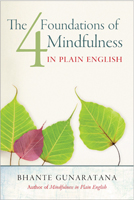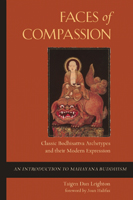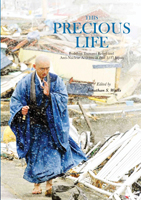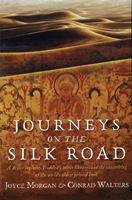 Almost two decades ago, the Theravada teacher Bhante Henepola Gunaratana (or Bhante G, as he is affectionately known) wrote Mindfulness in Plain English, a Buddhist classic known for its clear, direct, and practical explanations of mindfulness techniques. Following the publication of two subsequent mindfulness books over the years, he’s back again with The Four Foundations of Mindfulness (Wisdom Publications, August 2012, $15.95, paper, 192 pp.). “As always,” he says in the preface, “my concern in this book is the actual practice, right here in our lives. And when I write, I strive to write everything in plain English.” Bhante G makes good on his promise. In this new addition to the mindfulness series, he explicates the Satipatthana Sutta, one of the great and moststudied mindfulness texts of the Pali canon. Each of the four parts of the book addresses a foundation of mindfulness: body, feelings, mind, and phenomena. Each part is divided into even shorter sections with bullet-pointed guides, giving the book the slow-and-steady feel of Bhante G’s previous works. There’s a glossary in the back in case you get lost, but Bhante G’s calming tone will put even the newest dharma practitioner at ease. As the author advises in the first few pages, “This book is not meant to be read like a novel or digested like a university textbook. Rather, the teachings of the Buddha are to be explored and practiced, more like a piece of great music.”
Almost two decades ago, the Theravada teacher Bhante Henepola Gunaratana (or Bhante G, as he is affectionately known) wrote Mindfulness in Plain English, a Buddhist classic known for its clear, direct, and practical explanations of mindfulness techniques. Following the publication of two subsequent mindfulness books over the years, he’s back again with The Four Foundations of Mindfulness (Wisdom Publications, August 2012, $15.95, paper, 192 pp.). “As always,” he says in the preface, “my concern in this book is the actual practice, right here in our lives. And when I write, I strive to write everything in plain English.” Bhante G makes good on his promise. In this new addition to the mindfulness series, he explicates the Satipatthana Sutta, one of the great and moststudied mindfulness texts of the Pali canon. Each of the four parts of the book addresses a foundation of mindfulness: body, feelings, mind, and phenomena. Each part is divided into even shorter sections with bullet-pointed guides, giving the book the slow-and-steady feel of Bhante G’s previous works. There’s a glossary in the back in case you get lost, but Bhante G’s calming tone will put even the newest dharma practitioner at ease. As the author advises in the first few pages, “This book is not meant to be read like a novel or digested like a university textbook. Rather, the teachings of the Buddha are to be explored and practiced, more like a piece of great music.”

The bright stars of the Mahayana tradition— bodhisattvas and their deeds—fill the pages of ancient Buddhist literature, where we learn that a bodhisattva may appear in the form of a pirate or a spiritual leader. Taigen Dan Leighton’s Faces of Compassion: Classic Bodhisattva Archetypes and Their Modern Expression(Wisdom Publications, 2012, $18.95, paper, 352 pp.), a revised edition of his 2003 classic, captures this poignant truth and modernizes it, bringing the bodhisattva ideal into the present. Leighton’s motivation, he tells us, is to “encourage recognition that indeed, despite all the problems, cruelty, and despair of our world, we need not see the bodhisattva ideal as irrelevant, idealistic, or beyond reach.” Faces of Compassion, like bodhisattvas themselves, plays multiple roles. It is simultaneously an overview of the Mahayana tradition and its history, an introduction to who bodhisattvas are and what they do, and an exploration of what bodhisattvahood means in the modern world. Throughout the book, Leighton follows extensive descriptions of our favorite bodhisattvas with examples of people who embody their archetypical characteristics. Some of the choices are obvious, Aung San Suu Kyi, Mahatma Gandhi, Eihei Dogen among them. Other choices are not as straightforward. Comparing Bob Dylan to Manjushri and Clint Eastwood to Vimalakirti may seem a stretch at first, but as Leighton writes, “The point is that everyone has a capacity to act as a bodhisattva.”
 Even before the triple disaster of earthquake, tsunami, and nuclear meltdown last year, Japan was a nation in crisis, writes Jonathan S. Watts in This Precious Life: Buddhist Tsunami Relief and Anti- Nuclear Activism in Post 3/11 Japan (International Buddhist Exchange Center, 2012, $10.00, paper, 208 pp.). Watts is a research fellow at the International Buddhist Exchange Center, an organization that promotes the study of Buddhism in general, as well as the more particular investigation of socially engaged Buddhism in Japan. Defying any one genre, the book is split into three parts, with firsthand accounts of the relief work in the immediate aftermath of the disaster, essays that explore Buddhism’s relationship to the issues surrounding nuclear energy, and messages to Japan from the international Buddhist community. The first part of the book immediately grabs our attention—and more importantly, our emotion—as Buddhist clergy and relief workers recount stories of temples turned refugee centers tending to the emotional wounds of the survivors and evacuees with both spiritual and practical salves: hot tea, chanting, jokes, and smiles. There are some true heart-tuggers in This Precious Life, but the first section particularly—and the book overall—quite possibly suffer from the rendering of Japanese into English. In this translation, the words lose some of their emotion and tone, leaving even tales of pet rescue less compelling than they probably were in the original. Still, This Precious Life effectively paints the picture of a nation if not in crisis, then in deadlock. “What is the source of real happiness for the nation’s citizens,” Watts asks in the foreword, “modern virtues of economic growth and consumer accumulation or more traditional Japanese virtues of continuing bonds and human interconnection?” This Precious Life is a plaintive cry for the latter.
Even before the triple disaster of earthquake, tsunami, and nuclear meltdown last year, Japan was a nation in crisis, writes Jonathan S. Watts in This Precious Life: Buddhist Tsunami Relief and Anti- Nuclear Activism in Post 3/11 Japan (International Buddhist Exchange Center, 2012, $10.00, paper, 208 pp.). Watts is a research fellow at the International Buddhist Exchange Center, an organization that promotes the study of Buddhism in general, as well as the more particular investigation of socially engaged Buddhism in Japan. Defying any one genre, the book is split into three parts, with firsthand accounts of the relief work in the immediate aftermath of the disaster, essays that explore Buddhism’s relationship to the issues surrounding nuclear energy, and messages to Japan from the international Buddhist community. The first part of the book immediately grabs our attention—and more importantly, our emotion—as Buddhist clergy and relief workers recount stories of temples turned refugee centers tending to the emotional wounds of the survivors and evacuees with both spiritual and practical salves: hot tea, chanting, jokes, and smiles. There are some true heart-tuggers in This Precious Life, but the first section particularly—and the book overall—quite possibly suffer from the rendering of Japanese into English. In this translation, the words lose some of their emotion and tone, leaving even tales of pet rescue less compelling than they probably were in the original. Still, This Precious Life effectively paints the picture of a nation if not in crisis, then in deadlock. “What is the source of real happiness for the nation’s citizens,” Watts asks in the foreword, “modern virtues of economic growth and consumer accumulation or more traditional Japanese virtues of continuing bonds and human interconnection?” This Precious Life is a plaintive cry for the latter.
 What would it have been like if Indiana Jones had gone on a Buddhist adventure? Journeys on the Silk Road (Lyons Press, September 2012, $24.95, cloth, 336 pp.), from Australian journalists Joyce Morgan and Conrad Walters, gives us an idea. The book follows the exploits of the British- Hungarian explorer Aurel Stein, who traveled for years through the deserts of Turkistan, tracing the wanderings of ancient Chinese monks on the Silk Road. Along the way he meets a host of characters— Turkistani text forgers, rugged camel riders, an abbot guarding a cave of ancient documents— who help him discover the world’s oldest printed book, a Chinese version of the Diamond Sutra, created in 868 C.E. It’s certainly a story worth Steven Spielberg’s attention (and moreover, it’s historically true), but in reality Stein resembles the monks whose paths he devotedly followed more than he does any dashing Harrison Ford character. Stein had no family, no home, no riches— and most unlike Indie, no romance. Still, Journeys on the Silk Road is written with such color that the expansive history covered in the book, from early European Buddhist scholarship to debates over modern-day translations of the Diamond Sutra, is as exciting as a trip to the movies.
What would it have been like if Indiana Jones had gone on a Buddhist adventure? Journeys on the Silk Road (Lyons Press, September 2012, $24.95, cloth, 336 pp.), from Australian journalists Joyce Morgan and Conrad Walters, gives us an idea. The book follows the exploits of the British- Hungarian explorer Aurel Stein, who traveled for years through the deserts of Turkistan, tracing the wanderings of ancient Chinese monks on the Silk Road. Along the way he meets a host of characters— Turkistani text forgers, rugged camel riders, an abbot guarding a cave of ancient documents— who help him discover the world’s oldest printed book, a Chinese version of the Diamond Sutra, created in 868 C.E. It’s certainly a story worth Steven Spielberg’s attention (and moreover, it’s historically true), but in reality Stein resembles the monks whose paths he devotedly followed more than he does any dashing Harrison Ford character. Stein had no family, no home, no riches— and most unlike Indie, no romance. Still, Journeys on the Silk Road is written with such color that the expansive history covered in the book, from early European Buddhist scholarship to debates over modern-day translations of the Diamond Sutra, is as exciting as a trip to the movies.